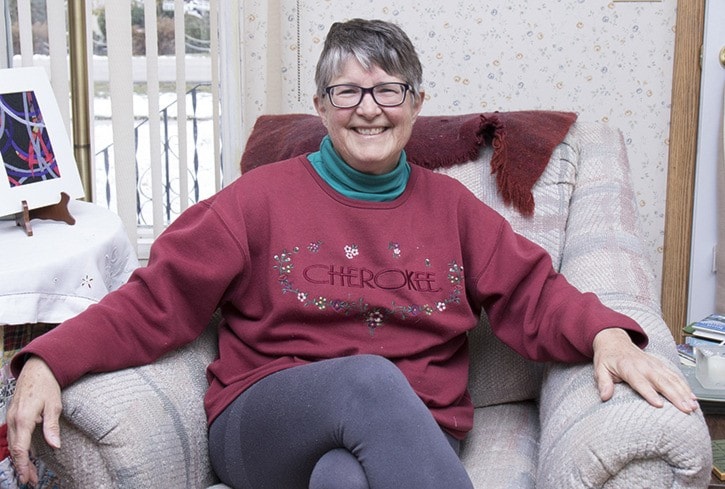BY KALISHA MENDONSA
Lacombe Express
A Central Alberta woman has taken nearly three years to complete an art installation and book to commemorate her husband’s battle with Type 1 diabetes, to be shown at the Lacombe Memorial Centre.
Margaret Blank will be hosting the opening reception of ‘Mark on the Body: Honouring those who live with Type 1 Diabetes’ on Oct. 26th at 7 p.m. with the installation running until Nov. 17th.
The textile art installation is comprised of three portions: a life-sized stitching representing her late husband, Howard, a collection of knitted ‘stump socks’ - as Margaret calls them - and several submissions from friends and family of small patches of cloth, stitched with marks of what diabetes means to the creator.
“I admired the work of a couple Canadian textile artists who had used stitches as marks in time, or to make a mark of memories,” she said.
“As I thought about the stitches as a mark, I began to think of the marks that diabetes makes on the life of a person and their families, especially those with Type 1 diabetes. That led me to think about what it would look like if we could see all the marks made on a body by insulin injections and blood tests.”
Blank got to work on figuring out how many insulin shots her husband had per day from the time he was diagnosed at age seven to his passing in 2006. She said she figured he had one insulin shot per day for a certain number of years, then two a day for the remaining years. As well, she calculated at least one blood sugar test per day for each of these days.
She picked three colours to represent these marks: blue for the days before Howard was diagnosed, a light skin tone colour for the insulin injections and a dark red for the number of blood sugar tests.
“I figured out how many stitches I would need based on all the math, and then how many stitches I would have to do per day from Nov. 29th, 2013 - my husband’s birthday - to the 9th of August, 2016 - the tenth anniversary of his death,” she said.
Blank worked steadily on the piece for months, beginning and completing the art on her assigned dates.
She used a tracing of her son’s body - the same height as his father - which she copied onto a piece of fabric and then she began to fill in the space.
“I had a piece of fabric in mind to use for the piece, but it turned out it wasn’t big enough. I coudn’t get the head on, and I couldn’t get the legs much below the knees - I thought that must have been the way it had to be. It’s a faceless figure, and my husband lost both of his legs below the knee. So I went with it,” she said.
Blank said that although it was a difficult process, it was also a healing experience.
“This installation was a daily challenge for me. I was getting farther and farther from Howard’s death with each step, which was healing. Knitting and making the marks with stitches was quite therapeutic. It heals the emotions more than generating them,” she said thoughtfully.
She added that promoting the event meant having to talk more and more about Howard’s death and his journey to the end, which is a painful part of sharing the story.
Margaret said that one of the hardest parts about the journey was that there were so many losses along the way, not simply the loss of her husband’s life.
“We often think that the only real losses are deaths, or divorces or maybe a job loss,” she said.
“When you’re dying by inches, there are a lot of losses. For people who are living with serious, chronic, deadly diseases, there are many losses. Many, many losses.”
She explained by the time Howard passed, he had lost some function in his eyes, the ability to enjoy certain foods and even the use of his hands.
He had lost hearing, short-term memory and functions in his digestive tract, as well as both of his legs below the knee.
Blank said the loss of her husband’s legs inspired her to knit him what they called ‘Stump socks’, a number of which will <span cl
